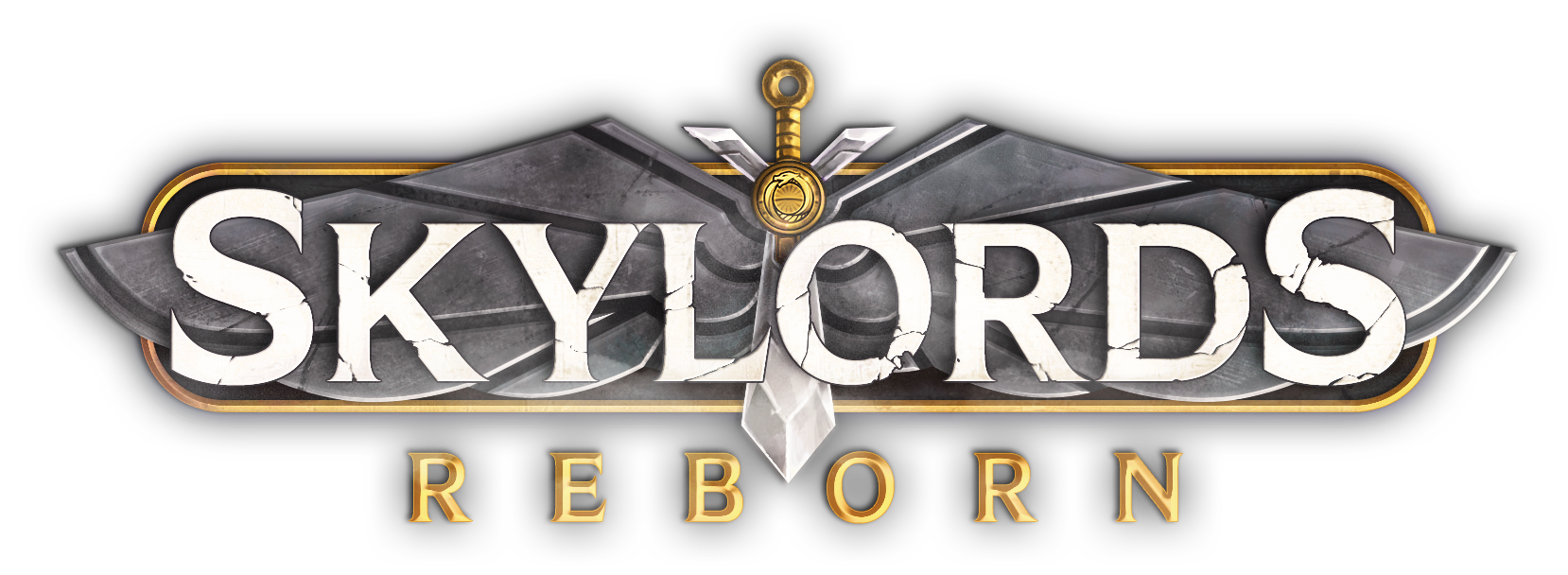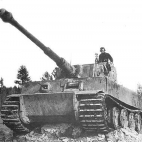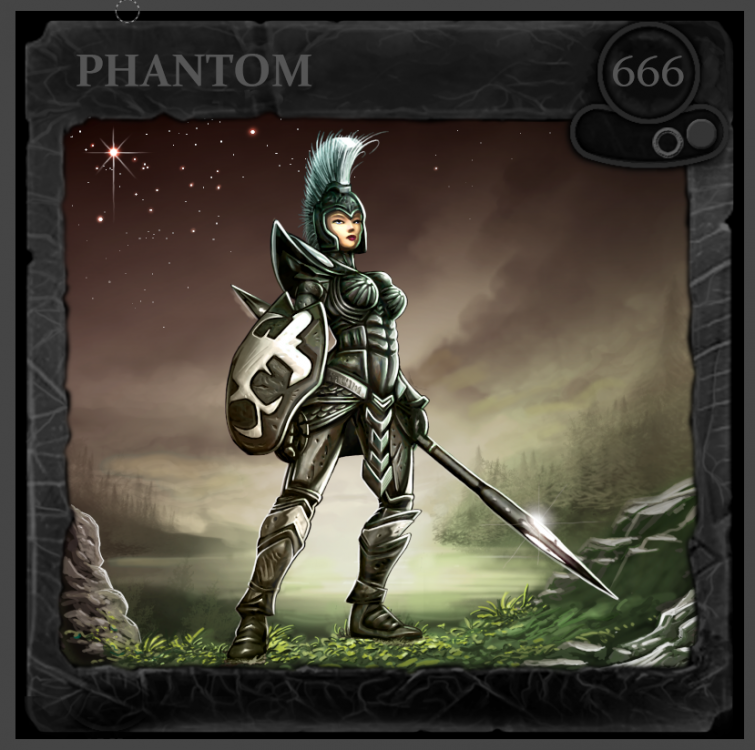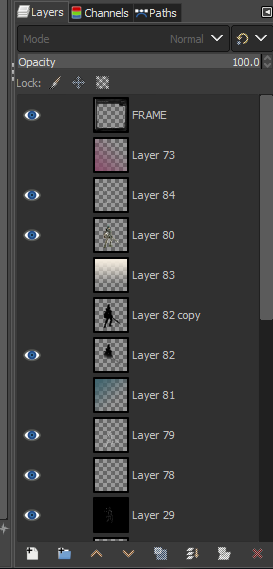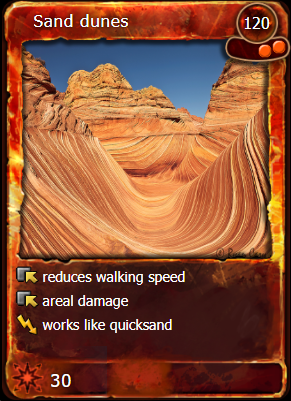Search the Community
Showing results for tags 'card'.
-
The below card creator was made by Arkadij Liebau. The idea is that you can create any BattleForge card by embedding an image as the portrait, then changing and adding further characteristics like colour (orbs), abilities, card name, damage, life points and rarity etc. Read below for my short user guide, and/or feel free to tinker with the tool itself. Click here, or on the above image to go to the card creator. 1) first, select from a building, unit or spell card template. this then changes the below options to match your choice 2) type in the card's name 3) enter power cost (or any text) 4) add up to four orbs. once you click this area, a small pop-up window will allow you to select Fire, Frost, Nature, Shadow or colourless orbs. click on an existing orb to delete it this step determines the card's main colour which can't be changed otherwise 5) click where the card illustration should be, in order to embed any portrait you'd like 6) this is where you add the number of charges, card types and classes depend on what you chose in step 1) 7) enter abilities and descriptins for them. you can choose between activated, passive, toggle etc, including their icons 8) & 9) these two fields are for attack type, damage, unit size and health. again, options depend on card type you selected in step 1) 10) choose the cards' rarity. only base symbols are included Here is an example card I made
-
From all the main 4 factions, not including mixed (Bandits - Shadow/Fire, Stonekin etc..), Shadow is the only one with a single melee T4 unit - Overlord. All others have a fairly mixed selection pool when it comes to T4 units, where Shadow is predominantly ranged. Maybe a big undead/beast type unit would be fitting, similar to Forest Elder.
-
The Corsair T3 Bandit unit provides 60% dmg buff to surrounding Bandit units, however Ravenheart and Raven Archwalker do not seem to count as such. Yes, they are a Neutral type card, however they are most clearly bandit units... if not Blight himself, who is more bandit 😄 I find this weird and I suggest they are tagged as such to be able to benefit from such buffs.
-
Shadows Over Lyr (SOL) is a pet project of mine, spanning over 30 hours to create and finalise. The intention was to retain the art of Battleforge and turn it into a thematic, printable (i.e. physical) card game that’s perfectly balanced and playable. Skip the dark grey text and jump to the Story and gameplay paragraph half-way below if you don't want to read about the history of how this project came to fruition. Behind the scenes My first choice was to create duel decks by copying Magic the Gathering cards, which I had to relinquish mainly because Wizards of the Coast don’t take kindly to copies of their card game. Creating mechanics mimicking MtG would’ve been fine, but not balanced enough to truly enjoy as an end product. After going through iterations of some of my beloved card games, I’ve finally decided to base SOL on the highly acclaimed Lost Cities. Which – due to its abstract nature – can be played using an expanded standard deck of cards, lending itself beautifully to iterations. The rules of SOL are easy to learn but the gameplay is ripe with tension and tough decisions, which has made Lost Cities so well received and sought after by gamers and non-gamers alike. I used card frames without the artwork, and stripped these of their power and orb counters, the rarity indicator then rebuilt missing parts to create a clean template for each card. Card artwork was used from the original Battleforge files (thanks to @bobfrog for collating these, and to @MrXLink for offering his help in locating a missing one), then flavour text was added at the bottom of each. The developers of Battleforge have come up with lore for 19 creatures per faction. I’ve read each of these, and based on the creature and how interesting the lore was decided to pick 12 per faction. The other reason why the cards were stripped clean is to replace the original barebones font with a display font that’s – in my opinion – gives cards more personality. The black bleed area around each card has been doubled, then replaced with a white trim to protect the edges of physical cards from damage caused by wear and tear. For the fifth faction/colour, I’ve combined a gold frame with the textures of the original black frame and used mostly legendary creatures to create another 12 cards. All card values were allocated based on the original power cost. Card backs were created from the map of Lyr, a flourish design used in the Battleforge lore book and layer styles. There were also five ‘location’ cards made without text and two rule cards included on a black solid card template to re-iterate each game phase and scoring to both players. Story and gameplay (thematic flavour text in italic) Like a dark, ominous storm cloud creeping through the darkest crevices and gleaming mountain tops, an unknown force is gathering over the land of Lyr. You and another Skylord have been alerted to this presence and decided to deal with the incursion. After several key locations have been identified as the main target of this mysterious enemy, negotiations between you and the other Skylord have ceased. Now it’s a frantic race between the two armies, seeing who will be able to repel the impending shadow and secure the knowledge held within these sites of power. Shadows of Lyr is a two-player hand management and set collection game. The objective is to achieve the highest overall score after three rounds by sending out the largest army possible for each faction, while hindering your opponent who’s trying to do the same. Game components: 2 identical game rule cards 5 location cards with horizontal layout 45 creature cards (9 for each faction) ranging from numbers 2 to 10 15 scout cards (3 for each faction) with no numerical value Give each player a game rule card to provide them with a quick reminder of game rules and scoring system. Place the 5 location cards – also known as ‘sites of power’ – face up between the two players, in any order you’d like. These will act as dividers between the two Skylords’ armies, and as discard piles for roaming creatures of corresponding colours. Shuffle the remaining creature and scout cards into a single deck of 60 cards, then deal 8 cards face down to each player. Place the remaining pile of cards face down within both players’ reach. Then the game begins. Players alternate turns and must take two actions each before ending their turn. Play a card from your hand. You have three options here: 1. Start a new column of cards. Place a card below one of the sites of power of matching colour on your side of the play area. As an example, units of the Nature faction may only be sent to reinforce and protect the green site of power. You’ve now committed to that location and have to do your utmost best to send enough forces to repel the enemy when it strikes against your army. 2. Place a card at the end of a column you already started. If you already have a card played below one of the sites of power, you may choose another unit from your hand to strengthen the defense. This unit must be of corresponding colour to the previous card played, and to the site of power it will be guarding from the enemy. This card must also have a higher value than the previous number in that column. Be careful, as scouts must be sent to a site of power before your main army arrives. This will give them enough time to entrench themselves, gather information and explore the area to give tactical advantages to your main forces. As an example, you may play up to three scouts per site of power of a colour – however once you place a unit that has a power value, you can no longer send scouts to that location. 3. Discard a card. When discarding from your hand, you must place that card face up on the matching colour of a site of power. Units discarded this way become roaming creatures, not part of either Skylords’ forces until enrolled in an army. Draw a card into your hand. You have two options here: 1. Choose one of the top cards from the five discard stacks (if any). You may take any face up card irrespective of their colour, as long as it’s not the same card you’ve just discarded. Units you take control of this way become part of your roster to reinforce your armies on the field when necessary. 2. Take the top card of the draw pile. The unit you’ve summoned this way becomes part of your roster to reinforce your armies on the field when necessary. Now it’s your opponent’s turn. Once a player draws the last card from the draw pile, the round ends immediately (the last card from the draw pile can't be played). The above indicates that both Skylords have ran out of time and are unable to summon any more creatures. The mysterious shadow descends upon the land of Lyr and its forces lay siege to each of the five sites of power. Scoring: Cards in your hand, and scouts placed on the battlefield are worth zero points. 1. For each faction (colour), add the card values together for each column on your side of the playing field. This is the sheer strength of your army. If you haven’t placed any cards below a site of power, skip that location. As a Skylord, you’ve decided not to commit any of your units to come to the aid of that site of power, endured neither losses nor victories, and have no knowledge of enemy activity in that area. 2. Subtract 20 points from each column where you’ve placed cards. This is the power of the enemy forces at that location, determining whether the Skylord was able to repel the enemy force, seizing the site of power to themselves. 3. Multiply subtotals by the number of scouts +1. Your scouts give your main armies tactical advice and strategic knowledge about the battlefield: In case you failed to dispatch enough forces and the enemy prevailed, your forces have perished and your scouts scattered. Not only have your lost your creatures, your scouts have been taken hostage, exposing your weaknesses causing a major blow to your overall strategy. In case your army has prevailed and destroyed the forces of shadow, your scouts have exploited the enemy’s tactics allowing you to turn their weakness against them. You’ve achieved a glorious victory. 4. Add 20 points for each column with at least 8 cards. Your superior army has ruthlessly decimated the enemy forces and eradicated the surviving stragglers, wavering the morale of your foe. Finally, add each column’s points together to form your victory points. The Skylord with the highest score begins the next round, preparing for another impeding attack. Whoever has the most victory points after three rounds is the winner of SOL. 3-player game variant: Plays exactly the same as the original base game of SOL for two players, but with the following differences: - location cards are only used as scrap piles, as everyone will play cards (i.e. start columns) in front of them - only 7 cards are given to each player at the beginning of the game, as opposed to the standard 8 (unless you're playing with 72 cards) - enemy forces have 15 power per location, as opposed to the standard 20 - you receive 15 bonus points for each column with at least 7 cards, as opposed to the standard 20 & 8 split Basically, 8 becomes 7 and 20 becomes 15 Please note this game mode has not been tested with 72 cards (6 factions) therefore slight tweaking may be required if you're adding the Forgotten to the mix. This is what a typical game of SOL would look like from one of the Skylords’ point of view. The other player would be placing cards on the opposite side of the discard piles, where the explanation texts are: And finally, here are some interesting tips and strategies to take into consideration: - be careful what you discard, as your opponent may want to use that card - you could discard cards with the intent of picking them up later, but in doing so you’re also giving your opponent the same option - cards you keep waiting for could be at the bottom of the draw pile or in your opponents hand - would you risk playing high value cards with the intention of denying them from your opponent, even if that means losing points for that colour? - make sure valuable cards in your hand get played, as once the last card from the draw pile is gone the round is over - be cautious about starting a new column, as once you place the first card in any given colour your opponent will try and deny those faction cards from you - you can keep discarding cards at the beginning of the game to guess what your opponent is after, but this might set you behind - if your opponent discards a card you want, do you take it right away and alert them to the fact that you want that colour? DOWNLOAD LINK: https://www.mediafire.com/folder/2v2lkal7pliop/Shadows_Over_Lyr There are now three files in this folder: BF_SOL.zip - first edition of SOL (standalone, not compatible with any of the below) This is the deck of cards you need to print to play the game. All of the above videos, photos and pictures were made with these images and cards. BF_SOL_revised.zip - revised edition of SOL with small cosmetic tweaks Font size for card values increased by 25% ; gave more emphasis to Shadows Over Lyr text on cardbacks ; canvas proportions constrained to 63:88 ; white bleed extended by 2mm per edge Please note that there is no difference in image quality or gameplay between the first and revised editions. BF_SOL_expansion.zip - expansion set containing 12 new cards as a new colour (the Forgotten faction) ; requires revised edition This is an expansion to boost the number of cards to Printerstudio's standard of 72 (6 factions x 12 cards each) i.e. as long as you don't use/print location and reference cards from the base game. The expansion is only compatible with the revised edition due to cosmetic tweaks, and is not required to play the base game of SOL. Two main reasons why this was created: 1) Lost Cities has just received an expansion adding a sixth colour 2) to provide meaningful choice to people who want to use up their 72-card slot at Printerstudio and don't care about rule reference or location cards Click here to look at a comparison photo between the two editions. Many thanks to @Avire for pointing us to http://www.printerstudio.de/machen/blanko-spielkarten-63x88mm-personalisieren.html in his thread. Printerstudio also has an American website at http://www.printerstudio.com/personalized/custom_playing_cards_blank_cards.html which is a tad more expensive unless you actually live in the States. The UK website is defunct according to their customer services, so please use the German site if you live in Europe (i.e. the first link). Have fun playing SOL with your partner, friends or gaming group!
-
Please note, this isn't a discussion regarding Amii Monument, I am proposing a new card. Amii Monument allows you to have 5 orbs, when typically, you'll only have 4. I like this functionality but believe a new card would serve this functionality better. A new, far weaker version of Amii Monument. Proposition: 4-orb (neutral). 100 cost (or similarly cheap). Semi-unique building (all players can spawn one each, but only one). Orb-switching is free (or cheap), and has no cooldown. Alternative proposition: 4-orb (neutral). 200 cost (or similarly moderate cost). Non-unique building (all players can spawn as many as they want) (like a normal card). Once an orb has been chosen, it is locked in, and cannot be changed. A card like this would open up some fun 4-orb plays. It would allow players to create some versatile and mixed decks, particularly allowing players to incorporate high level spells into their decks (i.e. nature spells). This would also allow decks using 4-orb pure cards to have a bit more options when playing. Thoughts? Edit: current Amii Monument means that people can't use 5-orb decks consistently for PvE. This suggestion allows people to reliably use 5-orb decks without having to consult other players nor limiting other players from using their own 5-orb deck.
-
I was thinking about card's special abilities (like infused provoke for grinder), most of them should not have an addition cost because, from my point of view, it takes some content away from the game, players wont cast them either because they dont do much or they cost too much or both. So I would rather make some of them free (which are not worth the cost) and maybe tweak the numbers for the other abilities or the cards themselves in order to balanced the cost of the actual card and it's special ability. This could be done before actually balancing the cards 1 by 1 cuz a lot of cards are unbalanced and by that I mean more or less useless. What do you think?
-
Is there a resource that has more PSD images for Battleforge? In the game files there are a lot of card artwork and roughly five PSDs, which are photoshop files that contain many things like layers, earlier concept backgrounds, etc. But they are much higher quality than the actual ingame cards. Does a database of these files exist somewhere or were they lost say when Phenomic closed or just never released? It'd be really cool to get a chance to look through these! Examples of a psd: unit_phantom_artwork_original.psd Has the layers: Was there any history on the unused "poledancer" card found in another psd file?
-
So ive encountered several players with santa today, i wasnt even aware he was released in the reborn BF version. i asked them how they got him and none of them knew, they just got him in the mail. can someone explain to me how you get him because i gotta xD
-
Hello there fellow Skylords! I'd like to suggest a new card, the balancing of it might not be intirely on point yet but I do like the Idea. Opinions?
-
Below is the recreation of my old guide on cards, drafted and finalised during the official beta phase. I filled in the blanks, rephrased and extended each paragraph. It contains plenty of basic, useful and important information for both beginners and more experiences players. factionsThe four main factions belong to the following elements:FIRE is all about offense, with its aggressive and damaging spells. Their units tend to have more damage and less health in general. FROST is the direct opposite to Fire with its defensive structures and high health, relatively low damage units. Their spells slow down or freeze groups of units. NATURE focuses on crowd control to dominate the battlefield. Their units excel at laying siege to enemy ranks and bases, supported by healing and neutralising spells. SHADOW favours corruption and sacrificing their own to gain the upper hand. Their units boast a wide range of powerful but counter-intuitive abilities that swiftly lay waste to enemies in skilled hands. card attributesMain attributes shown on each card: Cost: this is the number at the top right corner. Power Wells built on designated spots on the map provide power, which is then used to pay for the card’s cost. Furthermore, destroyed units and buildings – as well as spells cast – return 90% of their mana cost to the Void which acts a secondary income by essentially recycling power. Orbs: found at the top right corner and depicted by either filled-in or empty circles. Monuments built on designated spots on the map provide elemental orbs, which are then used to fulfil the orb requirement for each card. Filled-in orbs always refer to the element of their colour, while empty circles (neutral orbs) don’t require a specific element. Tier: is calculated by counting the number of orbs required for a particular card. Higher tiers become available as more Monuments are built and are generally more powerful. Charges: the first number below the card’s illustration. You may cast a card this many times, before it becomes dormant and enters a cooldown period. This recharge time is half the power cost of each creature, but otherwise may vary. Rarity: these are the various shapes at the bottom right corner, representing the likelihood of acquiring a card from booster packs, and their general in-game and trade value. Common cards have dark brown symbols, uncommons are grey, rares are orange and ultra-rares are turquoise. Edition: the shape of the rarity icon refers to the expansion corresponding cards have first appeared in. card typesThe three main types (or classes) of cards are units, buildings and spells. Each of these are then broken down into subclasses to further help in identifying a card’s role and purpose. This is a Tier 1 Sunstriders common UNIT Fire card that costs 50 power, requiring 1 fire orb to cast and has 5 charges before entering cooldown. The creature itself spawns in groups of 6, is considered small and has 360 health. It deals 450 ranged damage but receives a 50% bonus if attacking medium units. Attack type: melee units have a sword icon, ranged units a bow and creatures using special attacks have a star. Damage: done over 20 seconds. Units that are summoned away from a Power Well or Monument are dazed for 15 seconds and deal 50% less damage. Bonus damage: depicted by letters corresponding to seizes S, M, L, and XL. Units deal 50% additional damage to other creatures that match the attacking unit’s preference. However, units using special attacks don’t deal bonus damage. Creature size: small and medium units are sometimes summoned in groups of 4 to 6, shown by the second number below the portrait. If a member of the group dies, he or she can be revived but the squad’s total health and damage is temporarily reduced until then. Small and medium units are affected by knockback effects from large and extra-large units. Health: damaged units may be healed by some other creatures or spells. Alternatively, injured units can be returned to friendly buildings for healing. Units that are summoned away from a Power Well or Monument are dazed for 15 seconds and have 50% less health. Abilities: either active (must be triggered manually) or passive. Some cards have two versions (affinities) which manifests in different abilities but have otherwise the exact same attributes. Dazed units can’t use their special abilities for 15 seconds. This is a Tier 3 Armored Tower uncommon BUILDING Frost card that costs 80 power, requiring 1 frost orb in addition to two of any other colour to cast and has 3 charges before entering cooldown. Once built, it’ll have 2590 health and deal 1420 damage to enemies. Damage: while under construction, buildings take double damage from all sources, are unable to attack or use abilities. Constructing a building takes twice as long when not in the vicinity of a Power Well or Monument. Health: damaged buildings can be repaired using the hammer tool (found on the main interface to the right and above selected buildings) when out of combat or with spells. Buildings are also capable of healing nearby injured units. This is a Tier 3 Revenge rare SPELL Nature card that costs 100 power, 1 nature orb in addition to two of any other colour to cast and has 3 charges before entering cooldown. This is a Tier 4 Shadow Worm ultra-rare unit card that costs 250 power, requiring 4 shadow orbs to cast and only has 1 charge before entering cooldown. The creature is considered extra-large, has 3000 health and deals 4000 ranged damage but recieves a 50% bonus if attacking large units.
